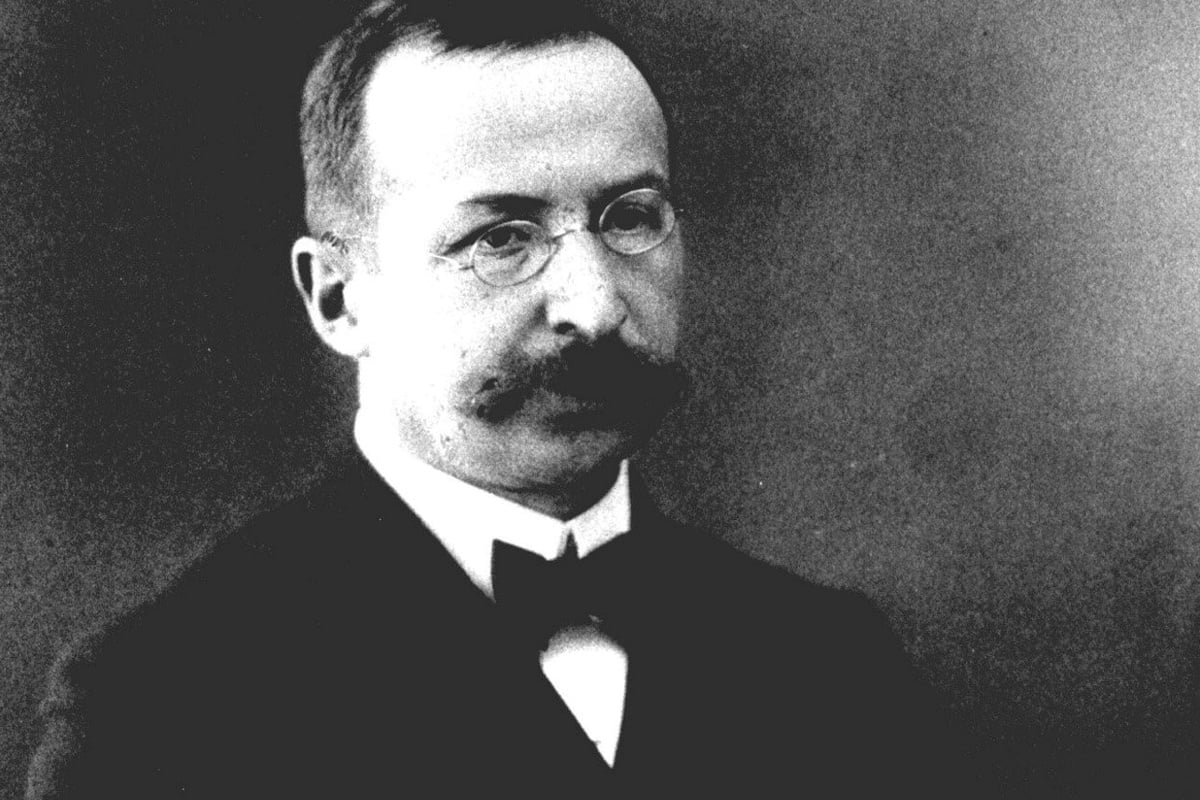Ernst Polaczek headed the Görlitz museums for five years, from 1928 to 1933. At that time the museums consisted primarily of the Oberlausitz memorial hall, which is now in the Polish part of Zgorzelec and was home to the Kaiser Friedrich Museum.
But what his predecessor Ludwig Feyerabend did not succeed, Polaczek did. In 1932 the museum received a second domicile in the city with the Kaisertrutz. The house at Neißstraße 30 was the seat of the Upper Lusatian Society of Sciences, which could also be used by the museum. In 1932 the newly set up graphic cabinet also opens there. Under Polaczek there are also other settings, for example from Otto-Frieddrich Gandert, who organizes and reshapes the prehistoric collection.
But Polaczek’s work in Görlitz did not last long. The museum man, born in Reichenberg in 1870, now Liberec, who studied art history in Strasbourg and headed the Kunst- und Kunstgewerbemuseum in Strasbourg from 1907 to 1918, had Jewish roots. With Hitler’s takeover and anti-Semitic laws, Polaczek was given early retirement on July 1, 1933 – at the age of 63.
Return of two graphics by the Klassik-Stiftung Weimar
The fact that the former Görlitz museum director is being talked about again these days has to do with his persecution in the Third Reich. After being kicked out of the Görlitzer Museum, Polaczek went to Freiburg im Breisgau with his wife. He died there in January 1939, his wife was deported to France in October 1940 and interned in the Gurs camp in southern France. Although she managed to get out of the camp and hide in Grenoble until 1942, she was discovered during a raid, deported to the Auschwitz extermination camp and murdered. This is how Romy Langeheine and Cora Chall from the Klassik Stiftung Weimar, who researched the persecution of the couple, describe it.
The story might end here, but it isn’t. Because in 1936 the Goethe National Museum in Weimar bought two paper cuttings from Adele Schopenhauer, the philosopher’s sister. For 40 Reichsmarks, the consignor: Prof. Dr. Ernst Polaczek. The Klassik Stiftung Weimar has been systematically checking all purchases made during the Third Reich for Nazi-looted property since 2010. Two historians, Rüdiger Haufe and Sebastian Schlegel, as well as the lawyer Cora Chall belong to the team.
Historians are also looking at this purchase. And come across many indications that Polaczek did not voluntarily part with his art objects. “It is very likely that Ernst Polaczek had to sell parts of his private art collection during this time (1933-39 – editor’s note) in order to be able to earn a living for himself and his wife,” says a report by the Weimar Classic Foundation. “His correspondence with the Freiburg tax office also shows that he was planning to emigrate from Germany: He pledged securities in order to be able to pay the so-called Reich flight tax.”
His wife, who became the sole heir to the family’s art collection after Polaczek’s death, ultimately had to sell the collection, which included outstanding ceramics, to museums in southern Germany. In any case, the Klassik-Stiftung Weimar assesses the prints as cultural assets that have been confiscated as a result of Nazi persecution, “since it can be assumed that the Nazis’ persecution led to the sale of the objects”. So a return was decided. But to whom?
Dignified memory needed
The forced sale of the ceramic collection put the Klassik-Stiftung on the trail of descendants.
Relatively soon after the end of the Second World War, the surviving descendants of Friedrike Polaczek sought reparation proceedings. The files on this procedure are still handed down today, they contain both Ernst and Friederike Polaczek’s certificates of inheritance and also names her two cousins as heirs. They survived the Nazi Empire because they fled to Brazil in time. South America was a popular destination for German exiles. According to this file, the trace was found until the 1950s. Finally, today’s descendants had to be identified. A son of one of the cousins and their grandchildren still live in Brazil today, Cora Chall told SZ and sächsische.de. The two Schopenhauer drawings have just arrived in Brazil.
The Görlitzer Museum was supposed to incorporate the findings of the Weimar Classic Foundation into a worthy tribute to Ernst Polaczek. Just a few years ago, an article in the “Görlitzer Magazin” published by the museum said: “Not much is known about Ernst Polazcek. Not even the date of his death could be determined.”
You can read more news from Görlitz here
Read more news from Niesky here
–


For further information about the Polaczek collection see: Siefert, Katharina: Nach geltendem Recht. Raub und Restitution der Sammlung Polaczek, in: Jahrbuch der Staatlichen Kunstsammlungen in Baden-Württemberg, vol. 50, 2013/14, S. 35-46